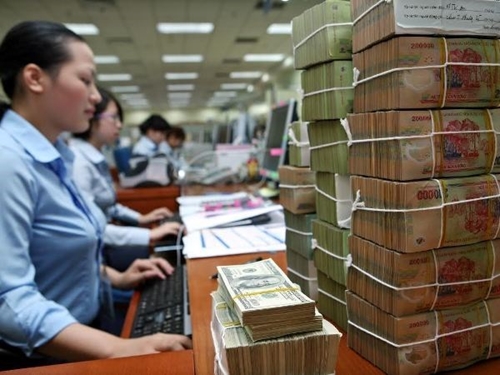April 06, 2019 | 21:08 (GMT+7)
Credit institutions recover nearly USD 8.8 billion of bad debts
Credit institutions in Vietnam settled more than VND 204.4 trillion (USD 8.77 billion) of non-performing loans (NPLs) by the end of the first quarter this year, said Nguyen Thi Hong, Deputy Governor of the State Bank of Vietnam (SBV).
The bad debts accounted for 40.1 percent of the total, Hong said.
The SBV report also showed banks handled VND 149.22 trillion (USD 6.37 billion) of NPLs last year.
The central bank will focus on bad debt settlement this year to reduce the NPL ratio of the entire banking system, including NPLs sold to the Vietnam Asset Management Company (VAMC), from 6.6 percent at the end of 2018 to below 5 percent by the end of this year.
The development strategy for the banking sector to 2025, approved in August last year, also targets reducing the ratio of bad debts to below 3 percent of outstanding loans by 2020.
    |
 |
|
Credit institutions settled more than VND 204.4 trillion (USD 8.77 billion) of non-performing loans (NPLs) by the end of the first quarter of 2019. |
To meet the target, SBV Governor Le Minh Hung has asked credit institutions to review and provide detailed roadmaps and solutions for settling their bad debts each year until 2022.
Credit institutions have also been asked to look for buyers for the debts they sold to the VAMC, while the VAMC has been asked to speed up the handling of bad debts and collateral the company purchased following market-based mechanisms.
The SBV has also issued regulations and policies in line with international practices to improve safety standards in banking, which has contributed to stronger governance and risk management capability under Basel II standards.
It is drafting a new circular regulating credit institutions’ trading and handling of NPLs with the aim of forcing the institutions to focus more on bad debt settlement.
Under the draft, private credit institutions, which still hold special bonds issued by the VAMC – meaning they have not settled bad debts kept at the VAMC yet – will not be allowed to make dividend payments in cash. The fund must instead be used to handle bad debts and enhance the institutions’ finance status.
Source: VNA